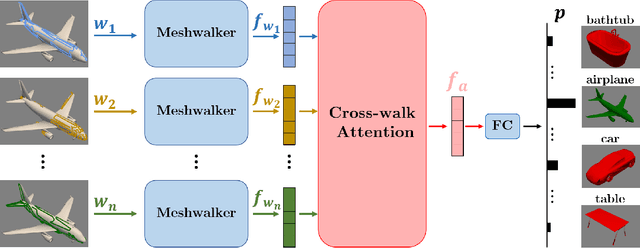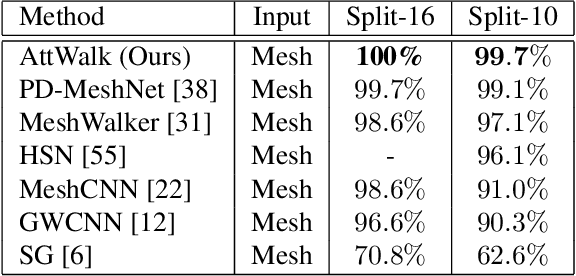Ran Ben Izhak
Random Walks for Adversarial Meshes
Feb 15, 2022



Abstract:A polygonal mesh is the most-commonly used representation of surfaces in computer graphics; thus, a variety of classification networks have been recently proposed. However, while adversarial attacks are wildly researched in 2D, almost no works on adversarial meshes exist. This paper proposes a novel, unified, and general adversarial attack, which leads to misclassification of numerous state-of-the-art mesh classification neural networks. Our attack approach is black-box, i.e. it has access only to the network's predictions, but not to the network's full architecture or gradients. The key idea is to train a network to imitate a given classification network. This is done by utilizing random walks along the mesh surface, which gather geometric information. These walks provide insight onto the regions of the mesh that are important for the correct prediction of the given classification network. These mesh regions are then modified more than other regions in order to attack the network in a manner that is barely visible to the naked eye.
AttWalk: Attentive Cross-Walks for Deep Mesh Analysis
Apr 23, 2021



Abstract:Mesh representation by random walks has been shown to benefit deep learning. Randomness is indeed a powerful concept. However, it comes with a price: some walks might wander around non-characteristic regions of the mesh, which might be harmful to shape analysis, especially when only a few walks are utilized. We propose a novel walk-attention mechanism that leverages the fact that multiple walks are used. The key idea is that the walks may provide each other with information regarding the meaningful (attentive) features of the mesh. We utilize this mutual information to extract a single descriptor of the mesh. This differs from common attention mechanisms that use attention to improve the representation of each individual descriptor. Our approach achieves SOTA results for two basic 3D shape analysis tasks: classification and retrieval. Even a handful of walks along a mesh suffice for learning.
 Add to Chrome
Add to Chrome Add to Firefox
Add to Firefox Add to Edge
Add to Edge